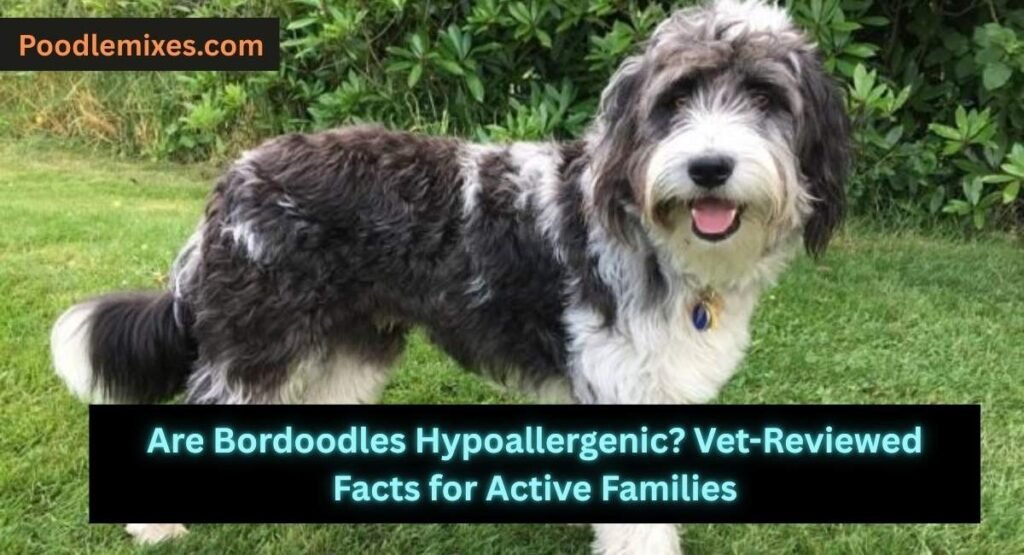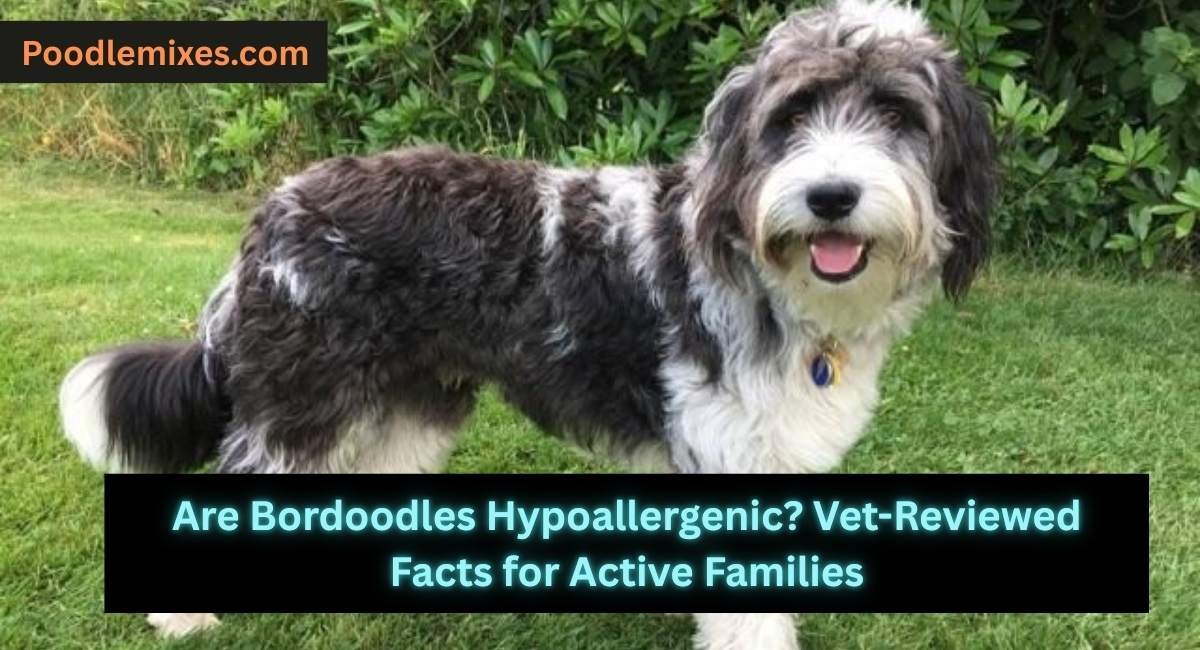Are Bordoodles hypoallergenic? This cross between the highly intelligent Border Collie and the clever, low-shedding Poodle is gaining popularity for its potential as an active, family-friendly pet. For allergy sufferers, the Poodle genetics offer hope, but the Border Collie’s heritage introduces variability. It’s essential to begin with the standard from the American College of Allergy, Asthma, and Immunology: no dog is 100% hypoallergenic. While a Bordoodle can be a good choice for some with allergies, their suitability is highly dependent on which parent’s coat they inherit. This guide will provide a clear-eyed look at the Bordoodle’s allergy potential.
Are Bordoodles Hypoallergenic?
The answer is not straightforward: some Bordoodles can be, but many are not. This mix is less predictable than breeds with two low-shedding parents. A Bordoodle that strongly favors the Poodle parent may have a low-shedding, hypoallergenic coat. However, one that takes after the Border Collie—a breed with a dense double coat that sheds moderately to heavily—will not be suitable for allergy sufferers. As the American Lung Association states, allergens are found in dander, saliva, and urine. A shedding coat spreads these allergens efficiently throughout the home. Therefore, calling the Bordoodle breed as a whole “hypoallergenic” is inaccurate; it is a case-by-case determination.

What Does Hypoallergenic Really Mean in Dogs?
The term “hypoallergenic” is a guideline, not a guarantee. It means a dog is less likely to cause a reaction, not that it’s incapable of doing so. The American Kennel Club (AKC) designates breeds like the Poodle as hypoallergenic because of their consistent, non-shedding coats.
It’s crucial to balance this with science. A study in the Journal of Allergy and Clinical Immunology found that allergen levels in homes with “hypoallergenic” dogs were not significantly lower than in other homes. This is especially relevant for a mix like the Bordoodle, where the genetic lottery can produce a high-shedding dog, making the hypoallergenic label risky to rely upon.
Bordoodle Coat Types and Allergen Impact
The Bordoodle’s coat is a wild card. The Border Collie’s double coat is designed for shedding, while the Poodle’s single coat is not. This leads to a wide spectrum of possible outcomes, which dramatically affects allergy risk.
The following chart outlines the potential Bordoodle coat types:
| Coat Type | Shedding Level | Dander Control | Allergy Risk (Relative) |
|---|---|---|---|
| Curly (Poodle-Dominant) | Very Low | Excellent | Lower |
| Wavy/Fleecy (A Balanced Mix) | Low to Moderate | Fair | Medium |
| Straight/Double-Coat (Border Collie-Dominant) | High (seasonal blowing of undercoat) | Poor | Higher |
As VCA Animal Hospitals explains, a double coat like the Border Collie’s sheds continuously and seasonally, releasing large amounts of dander into the environment. A Bordoodle with this coat type is not a good fit for an allergy-prone home.
Allergy Considerations for Bordoodle Owners
Choosing a Bordoodle when you have allergies requires careful planning and managed expectations. The variability is too great to make a blind commitment.
According to the National Institutes of Health (NCBI), allergen levels differ per dog. For people asking “are Bordoodles hypoallergenic,” the answer is: it depends almost entirely on the individual dog’s coat genetics. Someone with mild allergies might tolerate a wavy-coated Bordoodle, but anyone with significant sensitivities should prioritize a curly-coated individual or consider a more predictable breed.
Tips to Reduce Allergic Reactions With a Bordoodle
If you have mild allergies and choose a Bordoodle, rigorous management is essential, especially if the coat is wavy or mixed.
- Prioritize an F1B Bordoodle: For the best chance of an allergy-friendly coat, choose an F1B Bordoodle (a first-generation Bordoodle backcrossed to a Poodle). This increases the Poodle genetics to 75%, making a non-shedding coat much more likely.
- Intensive Grooming: Brush your Bordoodle several times a week to capture loose hair and dander. Professional grooming every 6-8 weeks is non-negotiable to maintain coat health and minimize shedding.
- Manage the Environment: Use a high-quality HEPA air purifier to capture airborne dander. Vacuum carpets and furniture with a HEPA filter vacuum several times a week.
- Create a Pet-Free Bedroom: This provides an allergen-free retreat for 8 hours each night, which can significantly reduce symptoms.
- Wash Hands and Clothing: Wash your hands after playing with or grooming your dog, and change clothes if you have a severe reaction.
Other Poodle Mixes Often Considered “Hypoallergenic”
Bordoodles sit in a different category than mixes with non-shedding parents. Here’s a comparison:
| Breed | Typical Coat | Shedding Level | Allergy Friendliness* |
|---|---|---|---|
| Bordoodle | Curly/Wavy/Straight | Low–High (varies greatly) | Low to Moderate (highly variable) |
| Schnoodle | Wiry/Curly | Very Low | Very High |
| Labradoodle | Curly/Wavy | Low–Moderate | Moderate |
| Sheepadoodle | Curly/Shaggy | Low–High (varies) | Moderate (varies) |
*Friendliness = relative chance of being allergy-manageable. Bordoodles have the widest variability.
FAQ Section (People Also Ask)
Do Bordoodles shed a lot?
It depends entirely on their coat. A Bordoodle with a Poodle-like curly coat will shed very little. One with a Border Collie-like double coat will shed significantly, especially during seasonal changes. There is no standard answer for this mix.
What is the best Bordoodle generation for allergies?
An F1B Bordoodle is the best and safest choice for allergy sufferers. The higher percentage of Poodle genetics (75%) drastically increases the odds of a non-shedding, low-dander coat compared to an F1 (50% Poodle, 50% Border Collie).
Can I live with a Bordoodle if I have allergies?
It is possible, but it requires a strategic approach. You must choose a curly-coated F1B Bordoodle and be dedicated to a stringent grooming and cleaning routine. For those with moderate to severe allergies, it is a higher-risk choice compared to a Schnoodle or Havapoo.
Conclusion
So, are Bordoodles hypoallergenic? The breed as a whole cannot be classified as such due to the high variability inherited from the shedding Border Collie parent. However, an individual Bordoodle with a strong Poodle-like coat can be an excellent, low-shedding companion for an active, allergy-sensitive household. The path to success is narrow: opt for an F1B generation, insist on meeting and spending time with the specific dog, and commit to a thorough care regimen. For those willing to do the homework, a Bordoodle can be a wonderful match, but it is not a gamble allergy sufferers should take lightly.
